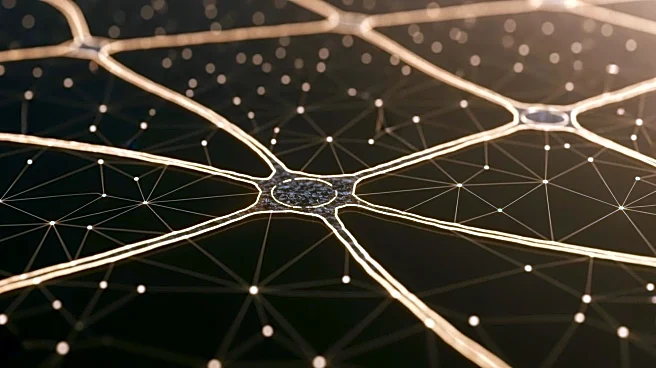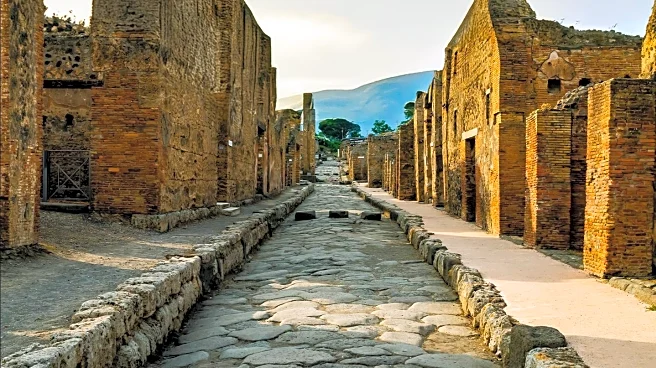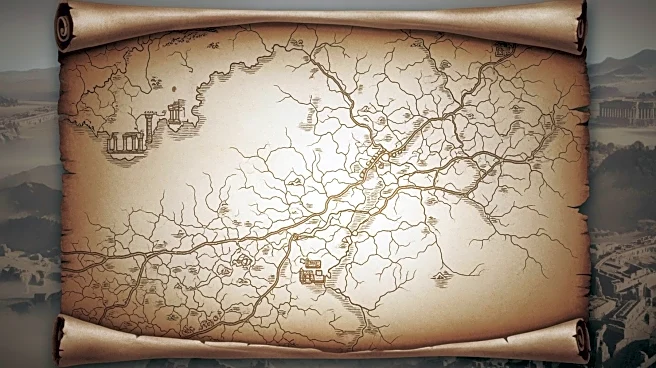What's Happening?
Researchers have developed a visualization tool called Itiner-e, which serves as a 'Google Maps' for ancient Roman roads. The tool allows users to virtually explore the Roman Empire's road network, spanning
over 300,000 kilometers. Created from 200 years of research, Itiner-e provides insights into how Romans traveled and transported goods across Europe, the Near East, and North Africa. The interactive map highlights the Empire's vast transportation system and its role in spreading ideas, people, and diseases.
Why It's Important?
The Itiner-e tool offers a comprehensive view of the Roman Empire's infrastructure, providing valuable insights into historical connectivity and its impact on societal development. It serves as a resource for researchers, historians, and enthusiasts, offering a detailed understanding of ancient transportation networks. The tool underscores the importance of infrastructure in shaping historical events and cultural exchanges, highlighting the long-term effects of the Roman Empire's road system.
What's Next?
The researchers plan to continue updating the Itiner-e map, adding maritime and river connections to enhance the understanding of the Roman Empire's transportation network. The tool is an evolving project, with ongoing efforts to improve accuracy and fill gaps in historical data. Future updates may focus on exploring the chronological evolution of roads and their impact on the Empire's development. The map aims to become a collaborative resource for studying ancient infrastructure and its role in shaping history.
Beyond the Headlines
The Itiner-e tool not only provides historical insights but also raises questions about the preservation of ancient infrastructure and its relevance to modern connectivity challenges. It invites discussions on the ethical considerations of studying and preserving historical transportation networks. The research highlights the role of infrastructure in facilitating cultural and economic exchanges, as well as the spread of diseases, offering lessons for contemporary infrastructure development.












